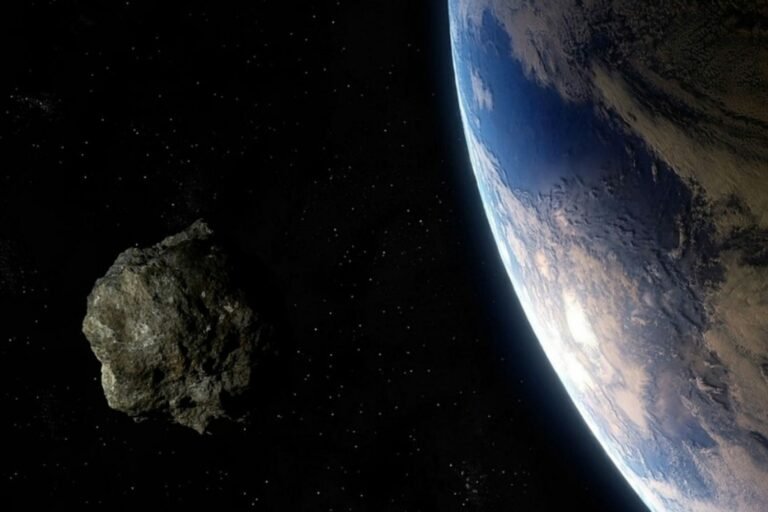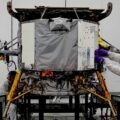A massive asteroid—the largest space object that will make a close approach to our planet this year—is expected to pass the Earth on March 21, according to NASA’s Jet Propulsion Laboratory.
The near approach of asteroid 2001 FO32 follows on the coattails of a recent close encounter with 99942 Apophis, a skyscraper-sized space rock, that came within 10,471,577 miles of Earth earlier this month.
At roughly double the size of Apophis, 20001 FO32 is comparable in size to California’s Golden Gate Bridge. However, according to NASA’s JPL, the nearest this near-Earth object will be coming during its fly by is still 1.25 million miles away; the closest the object will be to Earth until 2052.
You may have seen headlines about an #asteroid that will safely fly by Earth on March 21. While this asteroid, known as 2001 FO32, is large, it will safely zip past Earth at a distance of 1.3 million miles—five times further away than the Moon—and poses no risk of hitting Earth. pic.twitter.com/oZZG5UaFsf
— NASA Asteroid Watch (@AsteroidWatch) March 8, 2021
“There is no threat of a collision with our planet now or for centuries to come,” NASA said in a statement at its website.
According to Paul Chodas, director of the JPL Center for Near Earth Object Studies (CNEOS), NASA has known the orbital path of 2001 FO32 since its discovery two decades ago, and says there is no possibility that the asteroid could come any closer to Earth—at least not for several centuries.
“We know the orbital path of 2001 FO32 around the Sun very accurately, since it was discovered 20 years ago and has been tracked ever since,” says Chodas.
While 1.25 million miles may sound far too distant to be of any serious concern, astronomically speaking it does still make 2001 FO32 a near-Earth object, and therefore qualifies as a “potentially hazardous asteroid.”


The CNEOS and its tracking of near-Earth objects works in conjunction with NASA’s Planetary Defense Coordination Office, which aims to use telescopic and radar data to help mitigate any threat potential from asteroids which might be of concern as potential impactors.
Although it is further distant, at 77,000 miles per hour 2001 FO32 is also moving significantly faster than Apophis. CNEOS says that this actually is faster than most asteroids, and can be accounted for by the unusual shape and angle of its orbit around the Sun. The speed of the object accelerates as it reaches the “peak” of its elliptical orbit, and falls again as it is propelled back into deep space over the course of its more than two-year annual journey.
According to NASA’s JPL, the last time an asteroid of comparable size made such an astronomically close-approach had been last April, when asteroid 1998 OR2, an even larger near-Earth object tracked by the space program, made its close approach at roughly three times the distance that 2001 FO32 will pass on March 21.
At a safe, but relatively close distance like this, astronomers plan to take full advantage of the object’s close approach and measure its size and reflectiveness, as well as its spin rate and other dynamics of its appearance and orbit. NASA’s Space Communications and Navigation program (SCaN) also plans to attempt to obtain radar observations with the help of its Deep Space Network, whose ground stations on three continents may be able to ricochet signals off the asteroid back toward earth, where other radio antennas can collect and receive them.
Of key significance, however, is NASA’s plan to conduct asteroid geology studies over this great distance, with the help of its Infrared Telescope Facility (IRTF) at Mauna Kea, Hawaii. The telescope’s infrared spectrograph, SpeX, may be able to unravel clues about the asteroids mineral composition.
According to Vishnu Reddy, associate professor at the University of Arizona’s Lunar and Planetary Laboratory in Tucson, Arizona, the IRTF may allow astronomers to make comparisons with meteorites recovered on Earth, like one that made a rare impact in the United Kingdom in recent weeks.
Astronomers believe that 2001 FO32 will likely be an iron-rich asteroid, which might account for factors that include its size. However, measurements later this month may show that it possesses different chemical signatures than expected.
You can learn more about 2001 FO32 at NASA’s JPL website, as well as its Center for Near Earth Object Studies.
Follow us on Twitter, Facebook, and Instagram, to weigh in and share your thoughts. You can also get all the latest news and exciting feature content from The Debrief on Flipboard, and Pinterest. And don’t forget to subscribe to The Debrief YouTube Channel to check out The Official Debrief Podcast.

